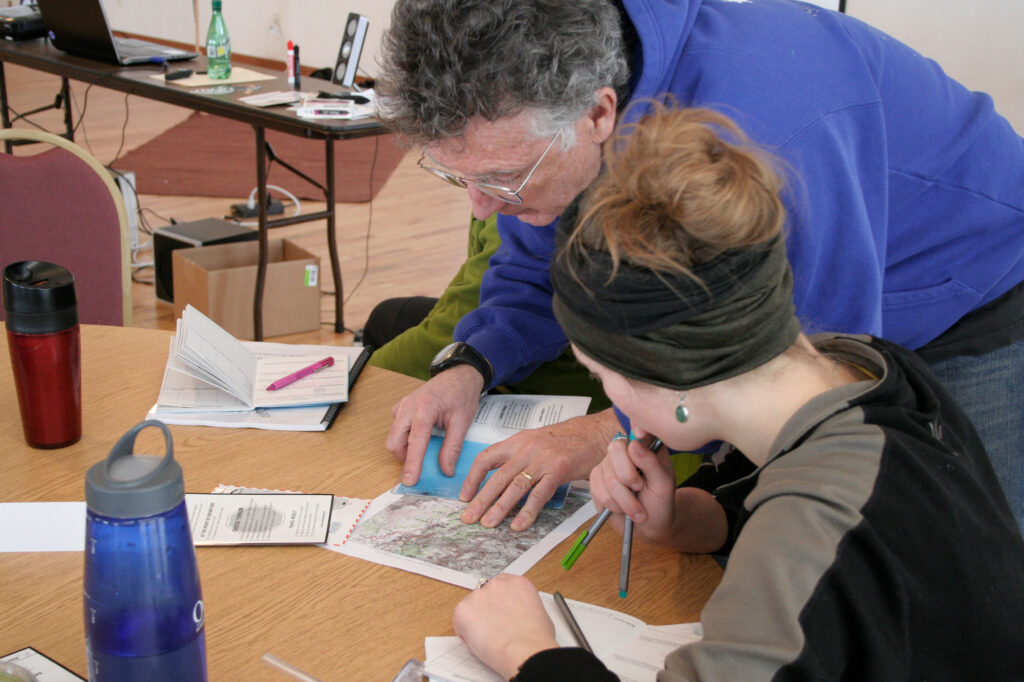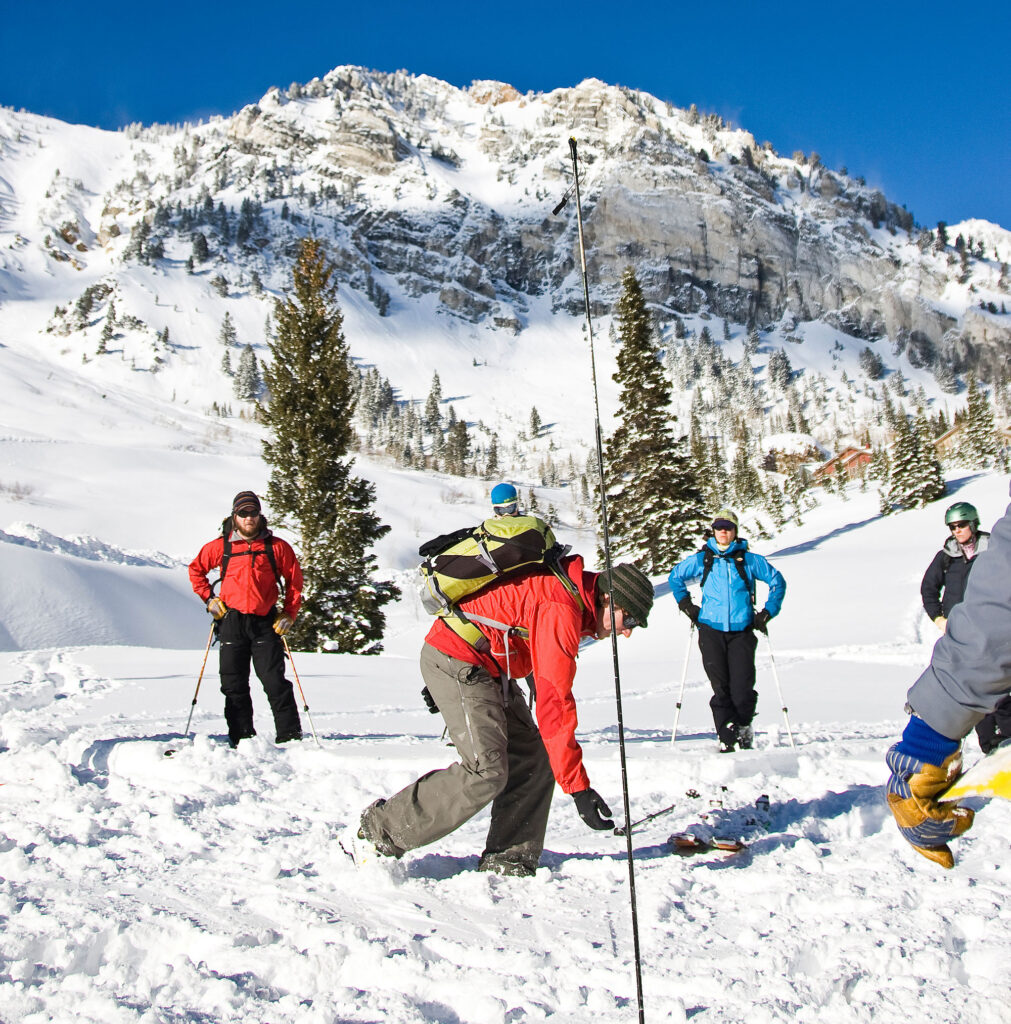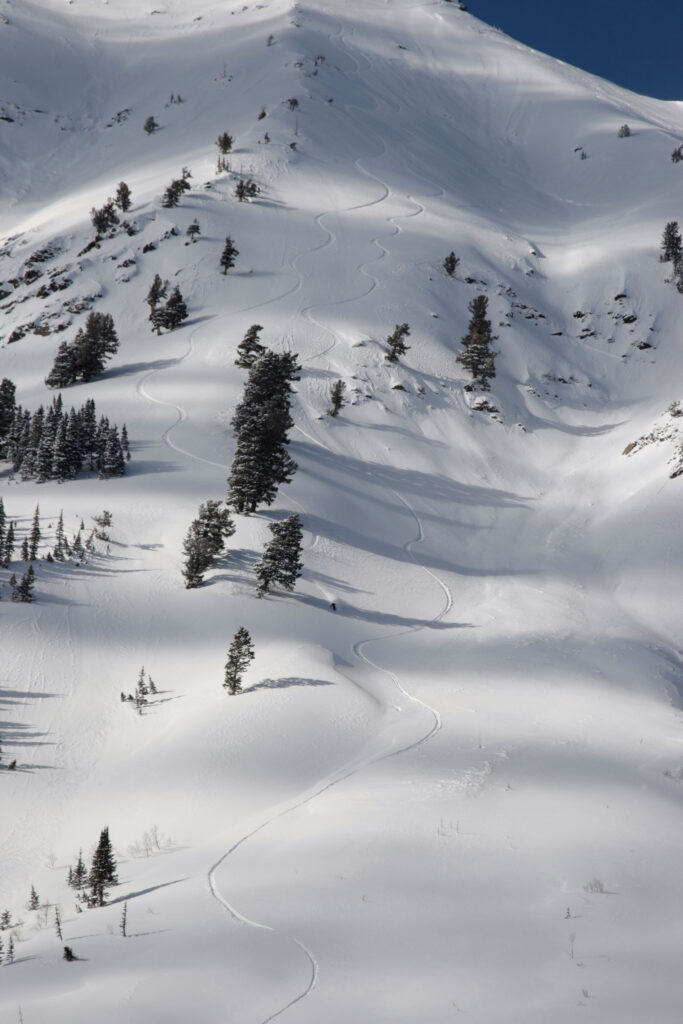Why You Should Enroll in Level 2
Photo courtesy of Ian Nicholson.
“I got my avy 1, I’m good to go.”
How many times have we heard those words at a pre-season social gathering?
There’s no single skill or course that will grant you success in the mountains. Instead, traveling through avalanche terrain is a balancing act—a complex art that requires a myriad of different skills, thought processes, practices, and lived experience. Level 1 is a great start, but it’s really a jumping off point for a lifetime of learning.
For many skiers, the unlimited opportunities to keep learning can feel exciting; something we can sink our teeth into and continue to work on for the rest of our lives. But it can also feel daunting, and I think many of us can definitely relate to the confusion of where to go next.
When I took my first avalanche course, an AIARE Recreational Level 1 in Estes Park, Colorado in 2014, I remember thinking, what now? I became (painfully) aware of how little I really knew; I wanted to go out and ski but felt unsure about how to apply what I’d just learned. I spent a few seasons slowly building more experience in the backcountry, developing new partnerships, scratching my head a lot, feeling confident, then unsure, then confident again. I had lots of questions, as did most of my partners.

When I finally signed up for a Level 2 course, I felt like the lightbulbs started to flicker on. That’s not to say I left the three-day course with all the answers (far from it), but I felt more empowered than ever to apply the tools I’d learned into more dynamic settings. I was fired up about trip-planning, tracking the snowpack, and I felt like I could be more than just a tagalong on a ski tour.
Despite the fact that we’re all in desperate need for more knowledge and training, Recreational Level 2 hasn’t caught on the same way the almost ubiquitous Level 1 course has. In fact, Liz Riggs Meder, director of recreation programs at AIARE, shared that only 6-7% of AIARE 1 students return to take AIARE 2. Professionals are conducting more research to understand why that is. Perhaps a lot of those Level 1 folks stop there because they just don’t ski much in the backcountry. Or maybe people find the cost and/or time commitment of Level 2 to be prohibitive, or maybe people just don’t know it’s out there.

Until 2017, avalanche education was a one-size-fits-all model. Professionals and recreationists sat side by side in the same courses, which included Levels 1, 2, and 3. Most recreational skiers took Level 1 and then called it quits. The Level 2 and 3 courses were marketed mostly towards professionals, Level 3 especially. The pro-rec split took place during the 2017 and 2018 season, a revamped educational path that aimed to divide the recreational users from those on the professional track.
While the pro courses put a heavy emphasis on standardized notations, recording processes, and forecasting, rec courses are more about terrain management, teamwork, and trip planning.
One of the coolest (yet often overlooked) part of that split is that the new rec Level 2 class really allows students to apply their risk management, terrain analysis, and tour-planning skills in a way that fits their specific goals. Since there’s no testing or assessment component like there is on the pro track, instructors can adjust to the students’ needs and interests.
Kailey Mckenna, a guide and avalanche instructor for Jackson Hole Mountain Guides, says that Level 2 really looks different depending on the group’s experience and questions. “It’s cool because we cover the same course goals, but that can look different for each group,” she says. “In one of my courses last year, we had skiers with a lot of personal experience, so we were able to take the skills they’d already been working on, apply new ones, and actually go ski a really cool line.” The group spent a lot of time talking about trip planning and terrain management, and by the end of the course they skied a complex couloir in Grand Teton National Park as a team.

“On another Level 2 I taught last year, the skiers didn’t have as much personal experience, so we talked more about reading the forecast, creating more robust tour plans, and practicing setting a skintrack,” she says. “It’s really about what people want to get out of it.”
“I think that’s really good education when instructors can adapt based on what students need,” echoes Meder. “Adult education is all about involving students in their own learning. What do you need? What do you want to learn? In AIARE 2, you can do that.”
Of course, all that depends on getting into a class with a folks who are around the same level as you. I signed up for a Level 2 with a few of my existing ski partners, so when we broke out into groups it felt like we had our own personal guide for the day. Meder suggests this is a good strategy: When you’re ready to sign up for Level 2, do so with three or four friends.
It’s not to say you should jump right into Level 2 the same season as your Level 1 course. Instructors still recommend a season or two in between formal courses, working on applying the skills you learned in Level 1, seeking out mentorship, and paying attention to the snowpack. Meder encourages Level 2 students to come to the class with a few ideas on where they’d like to improve or what they’re really curious about.
“I notice that students seem to absorb information from the course better if they can apply it to personal experience,” adds Mckenna. “Then you can come into the Level 2 ready to get the most out of it.”
While Meder says instructors would love to see more participants enroll in rec 2, the goal isn’t simply to boost class participation—it’s to create lifelong learners. “Ultimately we want people to continue their education,” she says. “A lot of guides and companies are offering really creative options, like season-long mentorship programs. What each skier needs is different, especially with the sport growing so much these past few years. Right now, we’re trying to better understand our audience and how we can help skiers take that next step.”
Lily Krass is a freelance storyteller based in Jackson, Wyoming. Her work has been featured in SKI Magazine, Powder Magazine, Backcountry Magazine, Freeskier, Teton Gravity Research, and Ascent Backcountry Snow Journal, and she has a Professional Level 1 Avalanche Certification. In addition to an all-consuming addiction to powder skiing, Krass takes snacking seriously. She is the co-author of “Beyond Skid: A Cookbook For Ski Bums,” a collection of dirtbag-friendly recipes inspired by life in a mountain town.
Support The Powder Cloud
The Powder Cloud is dedicated to providing you the education and mentorship required to travel safely and find the happiness in the backcountry.
We’d like to ask for your support—for our scrappy editorial team, our wise and experienced contributors and to help us develop new and creative ways to educate all backcountry skiers and riders.
If you are able, please consider supporting us. Thank you and we appreciate you.
Related Posts
Loading...


